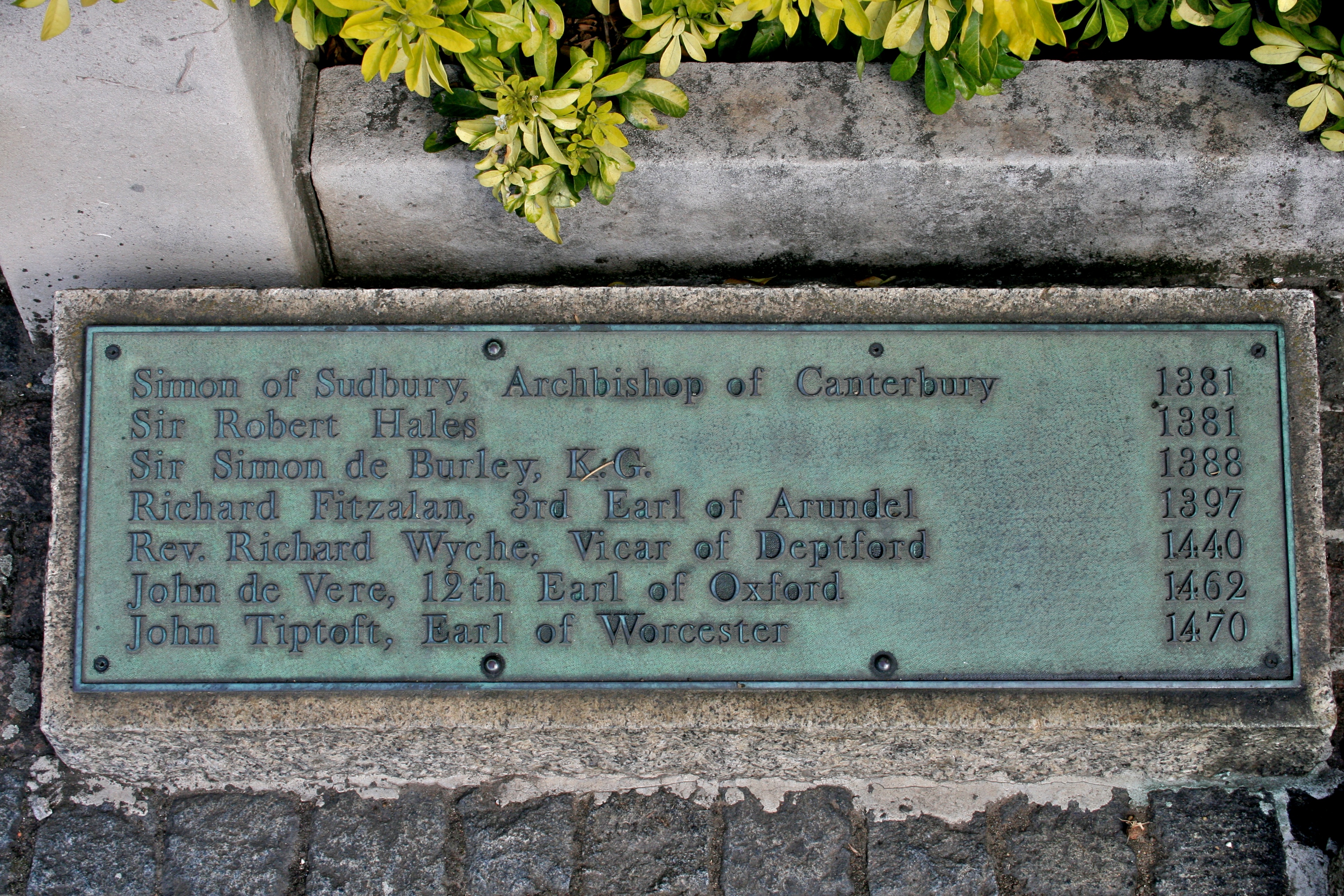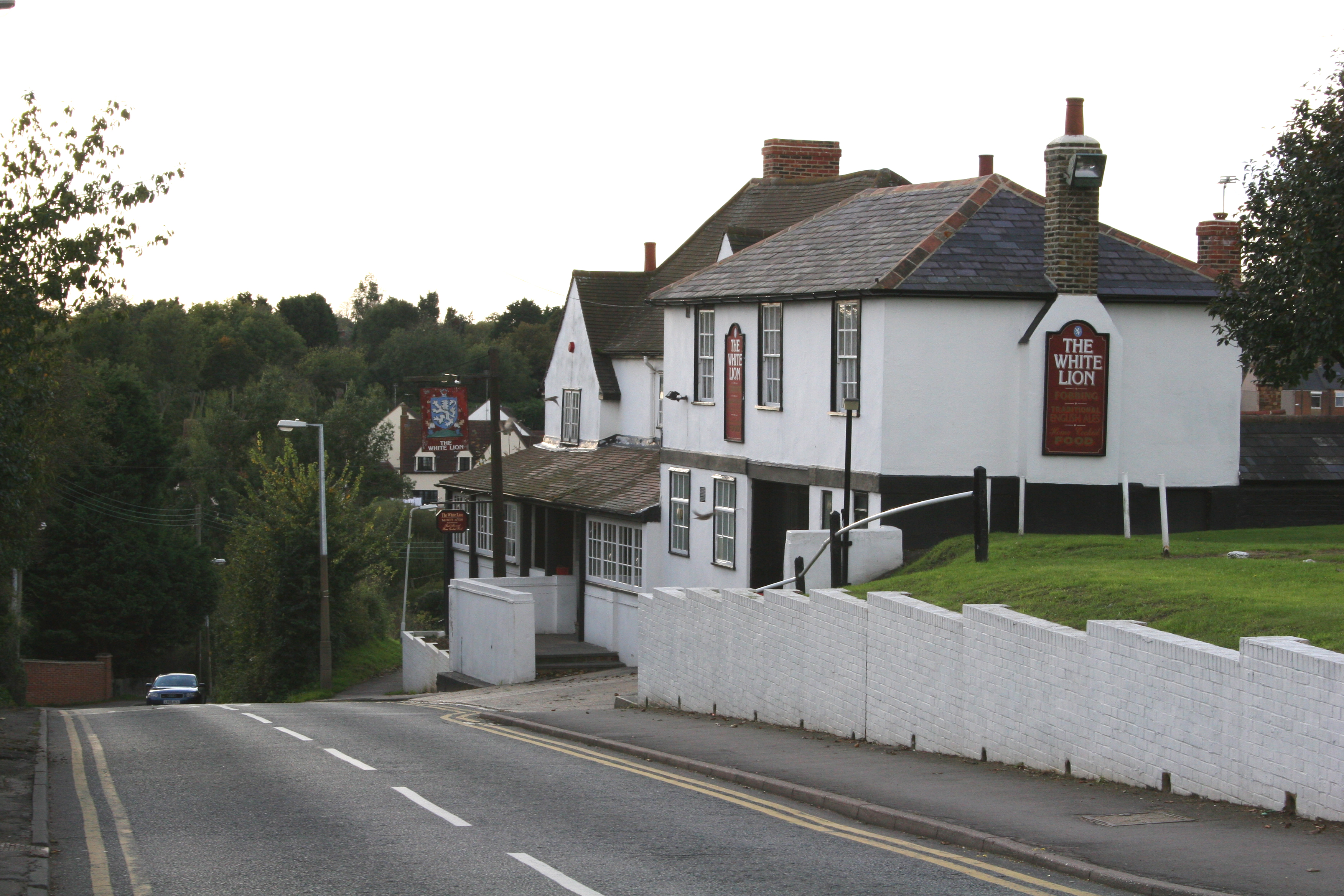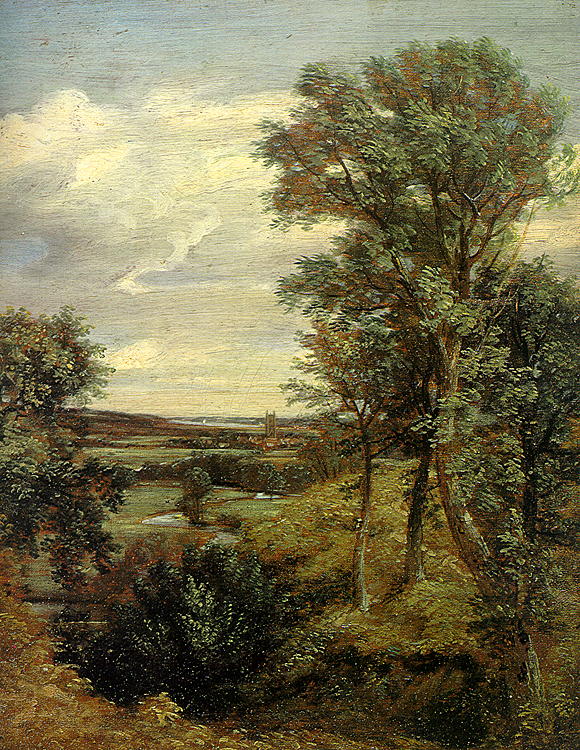|
John Ball (priest)
John Ball ( 1338 – 15 July 1381) was an English priest who took a prominent part in the Peasants' Revolt of 1381. Although he is often associated with John Wycliffe and the Lollard movement, Ball was actively preaching "articles contrary to the faith of the church" at least a decade before Wycliffe started attracting attention. Biography It is possible that John Ball was the son of William and Joan Ball of Peldon near Colchester. He was born and it has been suggested that his name is first mentioned in the Colchester Court Rolls of 30 January 1352, when, on coming of age in 1350 he acknowledged the tenancy of a tenement between East and West Stockwell Street in the town. Whether this is the John Ball from the Peasants' Revolt is not clear and others see this among the "speculative attempts" at reconstructing Ball's early life. Ball trained as a priest in York and referred to himself, according to Thomas Walsingham, as "Saint Mary, Seynte Marie priest of York". He later moved ... [...More Info...] [...Related Items...] OR: [Wikipedia] [Google] [Baidu] |
Peldon
Peldon is a village and civil parish in the Colchester (borough), Colchester borough of Essex, England. With Salcott, Virley, Great Wigborough and Little Wigborough, it forms part of the Winstred Hundred parish council. Nearby villages include Langenhoe. The parish church is dedicated to St Mary the Virgin and is a Grade I listed buildings in Essex, Grade I listed building. The population of the parish as of the 2011 census is 559. In 1870-72 John Marius Wilson's ''Imperial Gazetteer of England and Wales'' described Peldon as: "Peldon, a parish and a sub-district in Lexden district, Essex. The parish lies near Mersea Island, 4½ miles S W of Wivenhoe railway station, Wivenhoe r. station, and 5½ S by W of Colchester; and has a post-office under Colchester. Acres, 2,186. Real property, £3,591. Pop., 501. Houses, 106 The property is much subdivided." History During the British Iron Age, Iron Age and Roman Britain, Roman periods the marshes around Peldon were home to a thrivi ... [...More Info...] [...Related Items...] OR: [Wikipedia] [Google] [Baidu] |
Simon Of Sudbury
Simon Sudbury ( – 14 June 1381) was Bishop of London from 1361 to 1375, Archbishop of Canterbury from 1375 until his death, and in the last year of his life Lord Chancellor of England. He met a violent death during the Peasants' Revolt in 1381. Life The son of Nigel Theobald, Simon of Sudbury (as he later became known) was born at Sudbury in Suffolk, studied at the University of Paris, and became one of the chaplains of Pope Innocent VI, one of the Avignon popes, who in 1356 sent him on a mission to Edward III of England. In 1361 Sudbury was made Chancellor of Salisbury and in October that year the pope provided him to be Bishop of London, Sudbury's consecration occurring on 20 March 1362.Fryde, et al. ''Handbook of British Chronology'' p. 258 He was soon serving Edward III as an ambassador and in other ways. On 4 May 1375 he succeeded William Whittlesey as archbishop of Canterbury,Fryde, et al. ''Handbook of British Chronology'' p. 233 and during the rest of his life was a ... [...More Info...] [...Related Items...] OR: [Wikipedia] [Google] [Baidu] |
Goldhanger
Goldhanger is a village and a civil parish on the B1026 road in the Maldon District, in the county of Essex, England. In 2011 the parish had a population of 654. Goldhanger had an agricultural museum and has a church dedicated to St Peter. Goldhanger is at the head of a short creek, on the north side of the estuary of the River Blackwater, east northeast of the town of Maldon. There are eight roads in Goldhanger: Head Street, Fish Street, Church Street, St Peter's Close, Maldon Road, Hall Estate, Sorrell Close, and finally Blind Lane. The village is directly between Maldon and Tolleshunt D'Arcy and also has direct passage to the River Blackwater. The place-name ''Goldhanger'' is first attested in the Domesday Book of 1086, where it appears as ''Goldhangra''. The name means 'slope where marigold grew', from the Old English ''golde'' meaning '' marigold''. Notable people * John Christopher Atkinson (1814-1900), writer and antiquary *Jeremy Bamber (b. 1961), farmer, convict ... [...More Info...] [...Related Items...] OR: [Wikipedia] [Google] [Baidu] |
Fobbing
Fobbing is a small village and former civil parish in Thurrock, Essex, England, and one of Thurrock's traditional (Church of England) parishes. It is between Basildon and Corringham, and is also close to Stanford-le-Hope. In 1931 the parish had a population of 734. Fobbing is one of seven conservation areas in Thurrock. History The place-name ''Fobbing'' is first attested in the Domesday Book of 1086, where it appears as ''Phobinge''. It appears as ''Fobinges'' in 1125, and ''Fobbinges'' in 1227. The name means "Fobba's people", Fobba being a shortened form of the name Folcheorht. Fobbing was one of the main villages involved with the Peasants' Revolt. On 30 May 1381, the commissioner John Bampton summoned the Fobbing villagers, as well as villagers from Corringham and Stanford, to Brentwood to answer as to why they had not paid tax. The villagers told Bampton that they would give him nothing. Bampton then moved to arrest the villagers. A riot ensued in which the villag ... [...More Info...] [...Related Items...] OR: [Wikipedia] [Google] [Baidu] |
Coggeshall
Coggeshall ( or ) is a town and civil parish in the Braintree district, in Essex, England, between Braintree and Colchester on the Roman road Stane Street and the River Blackwater. In 2001 it had a population of 3,919. It has almost 300 listed buildings and a market whose charter was granted in 1256 by King Henry III. Etymology There has been a long history of debate about the meaning of the name Coggeshall. Different pronunciations and spellings have been used throughout its history and many theories as to the name's origin have arisen. The name appears as ''Kockeshale'' around the year 1060. while the first element may be an Old English personal name (''Cocc'' or ''Cogg''). Margaret Gelling associated the name Coggeshall with the landscape in which it is situated, believing that ''-hall'' comes from Anglo-Saxon ''healh'', meaning a nook or hollow, thus rendering the name as "Cogg's nook" (with Cogg as a proper name), corresponding to Coggeshall's sunken position in the ... [...More Info...] [...Related Items...] OR: [Wikipedia] [Google] [Baidu] |
Dedham, Essex
Dedham is a village in the City of Colchester district of Essex, England. It is near the River Stour, which is the border of Essex and Suffolk. The nearest town to Dedham is the small market town of Manningtree. Governance Dedham is part of the electoral ward called Dedham and Langham. The population of this ward at the 2011 Census was 2,943. Geography Dedham is frequently rated as containing some of England's most beautiful Lowland landscape, most particularly the water meadows of the River Stour, which passes along the northern boundary of the village forming the boundary between Essex and Suffolk. Dedham has a central nuclear settlement around the Church and the junction of Mill Lane and the High Street (part of the B1029). Connected to Dedham are the hamlets of The Heath and Lamb Corner. The village forms a key part of the Dedham Vale. History Early documents record the name as Diddsham, presumably for a family known as Did or Didd. For centuries, the parish of Dedh ... [...More Info...] [...Related Items...] OR: [Wikipedia] [Google] [Baidu] |
Cressing Temple
Cressing Temple is a medieval site situated between Witham and Braintree in Essex, close to the villages of Cressing and White Notley. It was amongst the very earliest and largest of the possessions of the Knights Templar in England,http://www.british-history.ac.uk/report.aspx?compid=39854&strquery=cressing temple Retrieved 9 October 2014 and is currently open to the public as a visitor attraction. The site has protection as an ancient monument. The Knights Templar built two barns which are preserved as Grade I listed buildings; one of these medieval barns is claimed to be the oldest standing timber-framed barn in the world.Bettley, James, and Nikolaus Pevsner. Essex: The Buildings of England. New Haven, Conn.: Yale University Press, 2007. 313. The Knights Templar Preceptory of Cressing The manor of Cressing was granted to the Knights Templar in 1136 by Matilda of Boulogne, the wife of King Stephen. It is close to the main road between London and Colchester and the road ... [...More Info...] [...Related Items...] OR: [Wikipedia] [Google] [Baidu] |
Braintree, Essex
Braintree is a town in Essex, England, and is the principal settlement of Braintree District. It is located north-east of Chelmsford, west of Colchester and north-west of Southend-on-Sea. According to the United Kingdom Census 2021, 2021 Census, the town had a population of 43,492; the urban area, which includes Great Notley, Rayne, Essex, Rayne, Tye Green and High Garrett, had a population of 55,793.East of England. Braintree citypopulation.de Braintree district has four market towns, picturesque villages, a designer shopping outlet, historic houses and gardens. The town has grown contiguously with several surrounding settlements. The original settlement and parish of Braintree lay on the River Brain and was bounded on the north by Stane Street (Colchester), Stane Street, the Roman roads in ... [...More Info...] [...Related Items...] OR: [Wikipedia] [Google] [Baidu] |
Bocking, Essex
Bocking is a suburban village on the northern side of Braintree, Essex, Braintree, in Essex, England. Bocking village was historically in two parts; the original settlement around the parish church became known as Bocking Churchstreet, while a separate linear settlement called Bocking grew up a little way to the south along Bradford Street and The Causeway, adjoining the northern edge of Braintree. The parish of Bocking was abolished in 1934, merging with Braintree to become the Urban district (England and Wales), urban district of Braintree and Bocking, which was in turn abolished in 1974 to become part of Braintree District. Both parts of Bocking now form part of the Braintree built up area. Bocking forms an electoral division for Essex County Council elections, and gives its name to Bocking Blackwater, Bocking North and Bocking South wards of Braintree District Council. History In 1290 on 16 September, Bocking was visited by the Archbishop of Canterbury, John of Peckham, who ... [...More Info...] [...Related Items...] OR: [Wikipedia] [Google] [Baidu] |
Billericay
Billericay ( ) is a town and civil parish in the Borough of Basildon in Essex, England. It lies within the London Basin, east of the City of London. The town was founded in the 13th century by the Stratford Langthorne Abbey, Abbot of West Ham, in his Great Burstead, Manor of Great Burstead. During the Peasants’ Revolt of 1381, the Essex rebels were defeated in a battle with Richard II's forces in the Battle of Billericay. In 1620 four local people were on board the Mayflower as it sailed to Massachusetts, to establish the first English settlement in what would become the north of the United States. The town has long taken a pride in this connection, and many businesses and other organisations use the name ''Mayflower'', with the Town Council and other local organisations using it as their emblem. Toponym The origin of the name Billericay is unclear. It was first recorded as "Byllyrica" in 1291.PH Reaney-Place Names of Essex- English Place name Society - V12 The urban settl ... [...More Info...] [...Related Items...] OR: [Wikipedia] [Google] [Baidu] |
Ashen, Essex
Ashen is a village and civil parish in Essex, England. It is located about east-southeast of Haverhill and is north from the county town of Chelmsford. The village lies to the south of the River Stour, which here forms the county boundary with Suffolk. The village is in the district of Braintree and the parliamentary constituency of Saffron Walden Saffron Walden is a market town and civil parish in the Uttlesford district of Essex, England, north of Bishop's Stortford, south of Cambridge and north of London. It retains a rural appearance and some buildings of the medieval period. Th .... The parish is part of the Bumpsteads and Upper Colne parish cluster. According to the 2011 census it had a population of 323. References External links * Ashen Church on Essex Churches website* Villages in Essex Braintree District {{Essex-geo-stub ... [...More Info...] [...Related Items...] OR: [Wikipedia] [Google] [Baidu] |
Kent
Kent is a Ceremonial counties of England, ceremonial county in South East England. It is bordered by Essex across the Thames Estuary to the north, the Strait of Dover to the south-east, East Sussex to the south-west, Surrey to the west, and Greater London to the north-west. The county town is Maidstone. The county has an area of and had population of 1,875,893 in 2022, making it the Ceremonial counties of England#Lieutenancy areas since 1997, fifth most populous county in England. The north of the county contains a conurbation which includes the towns of Chatham, Kent, Chatham, Gillingham, Kent, Gillingham, and Rochester, Kent, Rochester. Other large towns are Maidstone and Ashford, Kent, Ashford, and the City of Canterbury, borough of Canterbury holds City status in the United Kingdom, city status. For local government purposes Kent consists of a non-metropolitan county, with twelve districts, and the unitary authority area of Medway. The county historically included south-ea ... [...More Info...] [...Related Items...] OR: [Wikipedia] [Google] [Baidu] |






